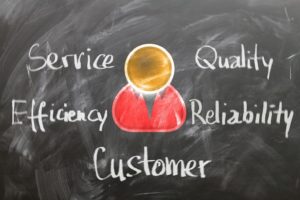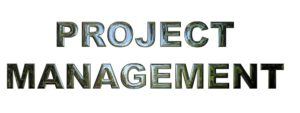Do you dream to start your own business?
Have you thought before of your financial freedom?
If you don’t want to work for any company or organizational body, then you need to have an idea and start your own business now.
Having your own business doesn’t only secure financial freedom, but also helps to have better self-esteem.
Start your own business
Starting your own business has many advantages. The main advantage is control.
Through owning your business, you control your time and your resources.
Also, don’t forget no one is controlling your salary anymore. There is only profit hopefully or loss now.
Is there any guideline you need to follow to start your business?
Sure, you shall follow the upcoming steps to be able to safely establish a new venture.
Steps for Starting your own business
1. Having an Idea

Having an idea is the first step you will need to start your own business.
The most important thing about the idea is to be a realistic idea.
These types of ideas can then be converted to a successful business, but that requires 2 major things.
- A strong will and your passion towards the business idea will drive that strong will.
- Strong planning will help you drive your passion.
Those 2 factors are really important to keep your idea going.
If you lost either the strong will, or the strong planning then you will lose your idea, burn it, and it will be like it has never existed.
2. Organizing your idea
Organizing one’s thoughts, writing it down, and having the boldness to startup are the core secrets of developing a brilliant business around.
Starting your business will be smooth in case you are really passionate about it, and that is one of the main pillars of having a successful business.
3. Having A Vision
Developing a business needs you to have a clear vision.
A clear vision translates your dreams into something attainable and makes you focus on how to achieve it.
Also, having a team with their diversified opinions enrich your vision.
Try always to think of your vision as a value you are going to enrich the society with.
Make sure you and your team are passionate about the idea then the vision inevitably will flourish.
This will help you to have a smooth start for your business.
4. Data Gathering
This step is extremely important in starting your own business. Also, it is important in developing the business process.
It is very important to gather data that help you put your idea into a frame, so you can then be able to translate it to the desired product, or a service.
Also, you will need to have a thorough understanding of the market, that is why it is crucial to have a team to do the market research.
Market research will help you gather the required data to a great extent, and it will give you the courage to penetrate the market.
Moreover, try to understand the potential risks in the market, and make sure you understand the type of labour you will need, and their availability in the market.
Add to it, it is important to have a complete image for your business suppliers.
Know more about the location you will need to start your business in as this will have to affect your business decision.
Always know that the data gathering step will help you have confidence in your business idea, and will keep you going.
5. Decide how to grow “Organic or Inorganic growth”
After finalizing the above steps, it will be important to have a decision about whether your business will grow organically or inorganically.
What is the difference between Organic business growth, and inorganic business growth?
Organic business growth is to develop, and start a business from scratch, for example, your own brand name, your management style, while the inorganic growth is being a part of another chain, for instance, joint ventures, or strategic alliances.
A one may favour organic growth over inorganic growth when the business is of unique competitiveness, and you can favour the inorganic type of growth in case of lack of expertise in that kind of business.
And to make such decision you have to be fully aware of your business nature, and the resources you have on hand for that business to grow, then this will help you to make a decision on how to grow!
6. Analysis
Now that you have decided how your business will nourish, and you have gathered the data for the market, and for your suppliers, then start your situational analysis.
Do a “SWOT analysis” for your business (Strength, Weakness, Opportunities, Threats).
Write down your business idea strengths, weaknesses, opportunities for your business, and threats that may face your business.
This will help you understand the survival capacity of your business idea. Also, it will help you set a proper plan to start your business.
Additionally, outline your competitive market using Porter’s five forces analysis.
What is Porter’s five forces analysis?
It is the kind of analysis that includes detailing for the possibility of the entry of new competitors, the threat of new substitutes, the bargaining power of the customer, the bargaining power of the suppliers, and the rivalry among the existing players.
I would also suggest having the five C’s of marketing identified.
What are the “5 C’s” of marketing?
The company, the collaborators, the customers, the competitors and the climate where the climate stands for the unseen forces in the market.
For example, the inflation rates for the currency, the technological trends or maybe the governmental trends for countries development.
Using the analytical tools above will help you set foot in the market, and those tools will increase your consciousness about your business field.
7. Setting Objectives
At this point set clear objectives, and they have to be “SMART“.
How can you create a smart Objective?
A smart objective is reflected as S for specific, M for measurable, A for attainable, and achievable, R for realistic, and resourced, and T for time-bound.
The targeted market share for your business along with the aimed average sale and gross margin shall be explicitly set as objectives.
Moreover, you need to reflect the required average customer satisfaction in your objectives.
Always make sure that you confirm communicating the objectives clearly on a frequent basis in the management’s meeting.
Why do so?
As this helps you, and your team remain focused.
Moreover, the successful choice of words that describe the objectives affects your business massively, as it controls the business direction.
Note that there are 2 types of objectives, the main objectives, and the minor objectives.
Normally the daily, and weekly targets are considered as the minor objectives that help to pave the road to the major objectives.
8. Writing a Business Plan

Start writing a realistic flexible business plan.
The business plan shall make it easy to start developing your own business.
List in your business plan all the challenges your business shall face.
Use visuals in the business plan where it gives you a clear understanding of the company’s goals.
Normally the business plan includes very important pillars as the executive summary.
The executive summary describes the whole business, and preferably to write it after completing the business plan.
Also, you will need to state clearly in the business plan the product or service you will be offering.
And always remember that having a strong marketing strategy, sales strategy, and operational plan are crucial elements for your business success.
Add to it, state clearly in the business plan the management team structure, members, and the organizational structure.
Don’t forget documenting the business workflow as this will help you save loads of time in the future.
Detailing the business setup is very important too.
In addition to documenting the business plan financial projections.
Those financial projections will help not only you, but also the sponsors you need to make crucial decisions regarding your business idea survival, and continuity.
9. Business Plan Implementation
Now that you have passed by all the preceding steps, it’s finally the time to start your business plan implementation.
Start implementing it by defining the pillars below.
1. Communication
Define the major communication pathways for you, your team, and your sponsors.
You shall identify how will you assign tasks, and measure their progress.
Identify also how frequent will you need to gather up your team.
2. Deviations spotting
Frequently identify any deviation from the business process.
As your business process is documented in the business plan, so you as a business owner or your team can spot any deviation from the already set process.
What shall you do after deviation identification?
Investigate the deviation, and conduct a gap analysis.
The gap analysis will help you know what happened versus what should happen.
Then you can conduct a root cause analysis based on knowing what actually happened, and identifying the gap in your process.
3. Root cause analysis
How shall you identify the root causes?
There are many tools that will help you identify them as 5 Whys, and fishbone analysis technique.
The 5 whys are to ask many Whys for the deviation that happened, till there are no more whys to ask.
An example to demonstrate the “5 whys” is asking for example why the team wasn’t trained on the procedure, because there was no enough training staff, why there is no enough training staff, because of the financial ability of the company, and so on.
The fishbone analysis technique depends on “6 Ms“.
The 6 Ms are mother nature, man, material, method, machine and measurement.
The fishbone root cause analysis technique is also known for the cause and effect diagram.
4. Establish CAPAs for the deviation root causes.
What are CAPAs?
CAPA’s abbreviation is “Corrective and preventive action”, and you shall assign CAPAs for the deviation root causes.
Those CAPAs need to prevent the recurrence of the deviation because they solve the root cause.
Also, the CAPA shall correct the deviation that happened.
5. CAPA effectiveness check
You shall then conduct a CAPA effectiveness check to confirm that the CAPAs are effective.
What are the criteria for effective CAPAs?
- They shall prevent the recurrence of the root cause.
- They should solve the deviation that happened as stated before.
- The CAPA shall be in place where it should be reflected in the relevant company documents.
- The CAPA shall be in use where it should be reflected in the company’s process.
How to conduct the CAPA effectiveness check?
- You can walk the whole process that you got a CAPA assigned for it.
- Make sure that the stated criteria above are followed for the CAPA.
6. Documentation, and training
Additionally, strong documentation system needs planning and implementation.
And you will need to document all the guidelines you, and your team will follow.
Get yourself, and your team a proper training in the company guidelines.
Make sure that your company documents are kept in a safe place with the correct personnel accessibility.
7. KPIs usage
Using “KPIs” is really important in maintaining your business performance. “KPIs” are the abbreviation of key performance indicators.
The creation of “KPIs” is based on knowing your targets.
So you can then start developing charts having the required target over a specific period of time versus the current performance.
Also, you can develop an improvement framework.
This improvement framework is a visualization of how you intend to develop your targets in the future.
Finally, it’s time for kicking off your business.
Conclusion
Having a documented detailed description of your business makes your business idea easy to achieve.
A defined communication pathway for business tasks helps to make quick progress in your business.
Moreover, you will need to prioritize your tasks on a determined frequent basis.
Also, it’s very important to take into consideration that any data is better than no data.
Although, it’s important to have as much accurate data as possible to launch your business successfully.
Note that you have to be flexible with them in your business plan.
Upon having the data, proceed with the operational implementation of your business.
Further details you may need for your business will come next, but it’s really important to start.
FAQs
What are the steps required to start your own business?
1. Have an idea, and organize it
2. Have a vision
3. Data gathering
4. Decide how your company would grow
5. Conduct analysis for your business idea and the market place
7. Set your objectives
8. Write a business plan and Implement it
How can you implement your business plan?
1. Clear communication
2. Deviation spotting & Conducting analysis for any deviation
3. Establishing CAPAs for the root causes
4. Doing CAPA effectiveness check
5. Strong documentation & training procedures to be used
6. Use KPIs
What is a CAPA?
CAPA is an abbreviation for ”Corrective Action and Preventive action”.
It is a quality tool which is used to correct any deviation that has happened to the business process and prevent the deviation root causes from re-occurance.










